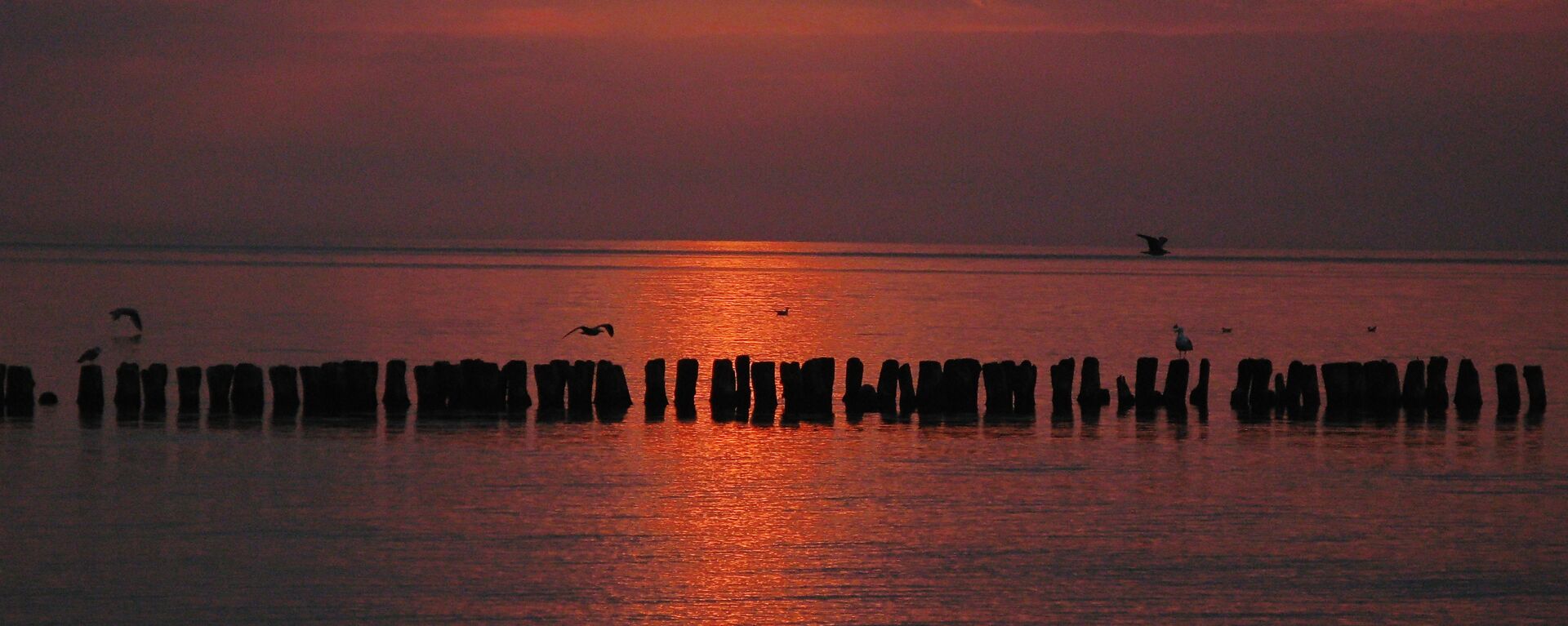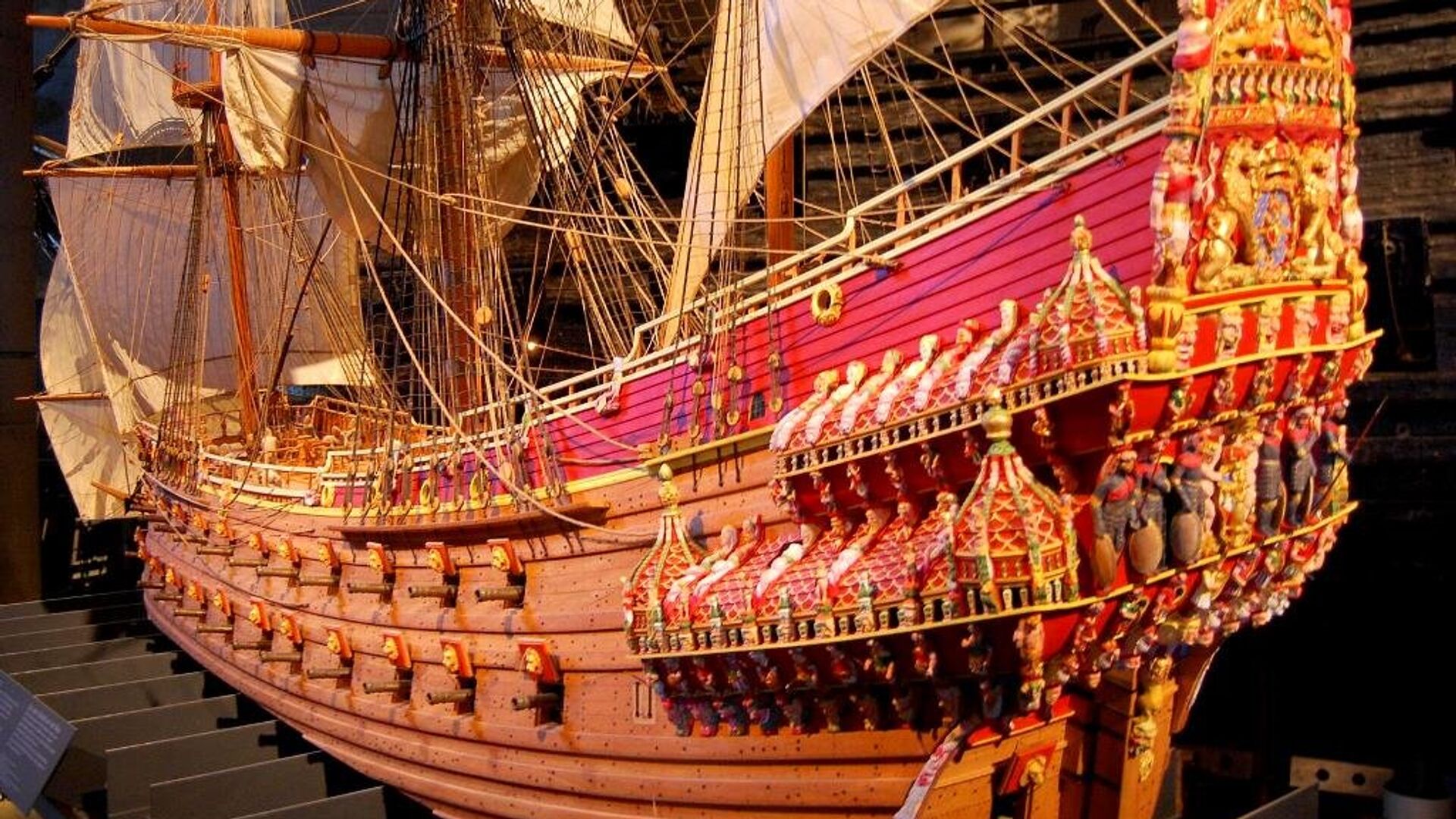https://sputnikglobe.com/20221025/legendary-17th-century-flagships-twin-found-in-sweden-1102601600.html
Legendary 17th-Century Flagship's Twin Found in Sweden
Legendary 17th-Century Flagship's Twin Found in Sweden
Sputnik International
The Orb, a sister vessel to the world-famous Vasa, was one of the fearsome warships launched by Swedish monarch Gustav II Adolf to confirm the nation's naval... 25.10.2022, Sputnik International
2022-10-25T06:25+0000
2022-10-25T06:25+0000
2022-10-25T09:11+0000
science & tech
news
sweden
scandinavia
history
baltic sea
shipwreck
https://cdn1.img.sputnikglobe.com/img/103136/63/1031366304_0:72:1025:648_1920x0_80_0_0_b5ea812934569803d68af9b4388792be.jpg
The 17th-century royal ship Äpplet (the Orb) has been found on the bottom of the sea near the island of Vaxön in the Stockholm archipelago.Because she is built from the same oak wood, marine archeologists from the Museum of Wrecks (Vrak) were quick to identify the shipwreck as the Orb, a twin of the famous flagship Vasa, which is now a museum and one of Stockholm's foremost sights.The site and the find matched the historic documents, the measurements are correct and construction details are identical to the Vasa. Rings in the wood revealed not only that the oak was chopped down in 1627, but that it comes from Ängsö in the western part of Lake Mälaren, where the wood for Vasa was sourced.Like the Vasa, the Orb is well preserved, despite 370 years in salty water, with her bottom half mainly intact.Historically, the marine entrance to Stockholm near the town of Vaxholm has been blocked by many worn-out ships to ward off enemies. The Orb was found in one of the straits, accompanied by smaller ships from the same era, the Apollo and the Maria.The rickety and poorly constructed Vasa notoriously sank on her maiden voyage in 1628. The Orb, completed a year later, was almost identical, but was a bit wider to increase stability. Despite the changes which had been made to avoid the Vasa's sticky end, the Orb was difficult to maneuver.Swedish monarch Gustav II Adolf (also known as Gustavus Adolphus) ordered a total of four large warships with double gun decks to confirm Sweden's naval dominance over the Baltic Sea. The other two - after the Vasa and the Orb - were the Crown and the Scepter. The Orb never saw naval battle, but served in the Thirty Year' War (1618-1648), one of the longest and most destructive conflicts in European history, as a transport ship, and was seen more as a symbol of power and status.During that era, large ships cost a lot of money and bore tremendous firepower, but were generally used for intimidation or prestige missions, unlike cheaper medium-sized ships that were much more seaworthy. After 30 years in service, Sweden tried to sell the Orb to, among others, France, which balked precisely because she didn't sail so well. Eventually, she was emptied of cannons and other valuables and sunk without a mast but otherwise intact. The wreck is in a military protected area where there is a ban on diving, and the investigations have therefore taken place in collaboration with the navy.In contrast with the Vasa, which was brought up in 1961 and ranks among the Swedish capital's main attractions, seeing hundreds of thousands of visitors each year, the Orb won't be salvaged, unless deemed absolutely necessary for scientific purposes. However, next spring, marine archeologists hope to make new dives to film the wreck with 3D technology, and see whether any sculptures and other decorations are left.
https://sputnikglobe.com/20220207/medieval-shipwreck-from-13th-century-found-in-sweden-1092810384.html
https://sputnikglobe.com/20211101/cultural-monument-or-traffic-hindrance-nazi-shipwreck-from-wwii-divides-norway-1090381485.html
sweden
scandinavia
baltic sea
Sputnik International
feedback@sputniknews.com
+74956456601
MIA „Rossiya Segodnya“
2022
News
en_EN
Sputnik International
feedback@sputniknews.com
+74956456601
MIA „Rossiya Segodnya“
Sputnik International
feedback@sputniknews.com
+74956456601
MIA „Rossiya Segodnya“
science & tech, news, sweden, scandinavia, history, baltic sea, shipwreck
science & tech, news, sweden, scandinavia, history, baltic sea, shipwreck
Legendary 17th-Century Flagship's Twin Found in Sweden
06:25 GMT 25.10.2022 (Updated: 09:11 GMT 25.10.2022) The Orb, a sister vessel to the world-famous Vasa, was one of the fearsome warships launched by Swedish monarch Gustav II Adolf to confirm the nation's naval dominance over the Baltic Sea. Although she managed to avoid her sister's fate of sinking on the maiden voyage, she still ended up on the bottom of the sea.
The 17th-century royal ship Äpplet (the Orb) has been found on the bottom of the sea near the island of Vaxön in the Stockholm archipelago.
Because she is built from the same oak wood, marine archeologists from the Museum of Wrecks (Vrak) were quick to identify the shipwreck as the Orb, a twin of the famous flagship Vasa, which is now a museum and one of Stockholm's foremost sights.
The site and the find matched the historic documents, the measurements are correct and construction details are identical to the Vasa. Rings in the wood revealed not only that the oak was chopped down in 1627, but that it comes from Ängsö in the western part of Lake Mälaren, where the wood for Vasa was sourced.
Like the Vasa, the Orb is well preserved, despite 370 years in salty water, with her bottom half mainly intact.
Historically, the marine entrance to Stockholm near the town of Vaxholm has been blocked by many worn-out ships to ward off enemies. The Orb was found in one of the straits, accompanied by smaller ships from the same era, the Apollo and the Maria.
The rickety and poorly constructed Vasa notoriously sank on her maiden voyage in 1628. The Orb, completed a year later, was almost identical, but was a bit wider to increase stability. Despite the changes which had been made to avoid the Vasa's sticky end, the Orb was difficult to maneuver.
“Unlike the Vasa, it sailed, but it was not a successful ship,” marine archeologist Patrik Höglund of the Museum of Wrecks said.
Swedish monarch Gustav II Adolf (also known as Gustavus Adolphus) ordered a total of four large warships with double gun decks to confirm Sweden's naval dominance over the Baltic Sea. The other two - after the Vasa and the Orb - were the Crown and the Scepter. The Orb
never saw naval battle, but served in the Thirty Year' War (1618-1648), one of the longest and most destructive conflicts in European history, as a
transport ship, and was seen more as a symbol of power and status.
During that era, large ships cost a lot of money and bore tremendous firepower, but were generally used for intimidation or prestige missions, unlike cheaper medium-sized ships that were much more seaworthy.

7 February 2022, 05:28 GMT
After 30 years in service, Sweden tried to sell the Orb to, among others, France, which balked precisely because she didn't sail so well. Eventually, she was emptied of cannons and other valuables and sunk without a mast but otherwise intact. The wreck is in a military protected area where there is a ban on diving, and the investigations have therefore taken place in collaboration with the navy.
In contrast with the Vasa, which was brought up in 1961 and ranks among the Swedish capital's main attractions, seeing hundreds of thousands of visitors each year, the Orb won't be salvaged, unless deemed absolutely necessary for scientific purposes. However, next spring, marine archeologists hope to make new dives to film the wreck with 3D technology, and see whether any sculptures and other decorations are left.

1 November 2021, 07:43 GMT



